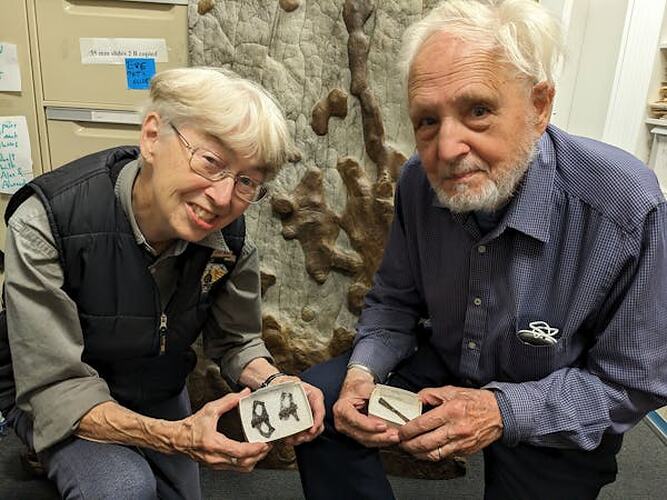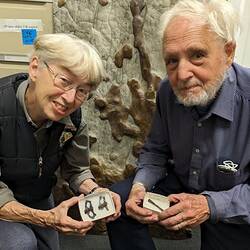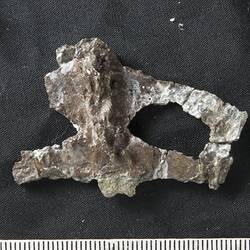New research on old bones has shed light on pterosaur fossils from the early Cretaceous period of Australia, which took place roughly 107 million years ago. The bones were discovered in Victoria in the late 1980s at a fossil site called Dinosaur Cove, a few hours' drive west of Melbourne. A paper describing the bones was published in March 2023 in the journal Historical Biology.
The oldest pterosaur bones we have
The Dinosaur Cove fossils are the geologically oldest pterosaur remains known from the Cretaceous of Australia. These bones belonged to two separate individuals, because there's a relative size difference between the two. One specimen is a partial sacrum (the fused vertebrae from between the pelvic bones), a relative rarity in the pterosaur fossil record. The other is a comparatively small fourth metacarpal (part of the wing finger) - it is the first evidence of a juvenile pterosaur found in Australia.
Although the exact pterosaur species could not be pinpointed, the partial sacrum belonged to an individual with a wingspan estimated to exceed two metres, while the juvenile pterosaur had a wingspan just over one metre.
In the early Cretaceous, approximately 110-107 million years ago, Victoria was virtually unrecognisable. The Bass Strait was a narrow valley occupied by fast-flowing rivers. Conifers and ginkgoes grew here instead of eucalypts and grasses, and dinosaurs reigned. On the ground, the dominant herbivore animals were small-bodied, beaked ornithopods, perpetually wary of the rapacious megaraptoran theropods.
For more than 30 years, it has been clear to scientists that flying reptiles called pterosaurs soared through the Victorian Cretaceous skies, above the heads of the dinosaurs. Until recently, however, they have remained a mystery.
Treasure at Dinosaur Cove
Large-scale excavations at Dinosaur Cove began in 1984, and for more than 40 years, a team of volunteers called Dinosaur Dreaming have excavated fossils along several other sites scattered across the Victorian coast.
Tom Rich and Pat Vickers-Rich, co-authors of the paper, led the excavations that yielded not just the newly described pterosaurs, but myriad other discoveries as well.
The work at this rich fossil site has resulted in thousands of dinosaur bones and other fossils. These include fossil fish (bony fish and lungfish), skeletal remains from ornithopods, megaraptoran theropods, aquatic plesiosaurs and prehistoric mammals. But among the rarest vertebrate fossils from Dinosaur Cove are those from pterosaurs.
Pterosaurs at high latitudes
Few pterosaur remains have been reported from fossil sites that were at high latitudes during the Age of Reptiles - the Mesozoic Era.
During the Cretaceous, Australia was farther south than it is today. In fact, Victoria was within the polar circle during much of the Cretaceous. Southeast Australia was not frozen over at this time, but there were weeks or months of continuous darkness during the winter. Despite these harsh polar conditions, life found a way to survive and thrive.
This prompts a few questions: were pterosaurs permanent residents in southeast Australia? Or did they migrate south during summer and head north for the winter? From a young age, pterosaurs were adept fliers, their bones already able to withstand the stresses of both launch and flight. However, subtle variations in the shape of the bones imply that hatchlings differed from their adult counterparts in terms of speed and manoeuvrability. Until we discover pterosaur eggs or embryonic individuals at sites like Dinosaur Cove that were at high latitudes at the time, we won't be able to confirm if pterosaurs were year-round residents or migratory.
Despite the rarity of pterosaurs in the fossil record, it is only a matter of time before we find more complete pterosaur material from Dinosaur Cove and other Cretaceous sites from coastal Victoria. Then, we can finally uncover the identity of these ancient, enigmatic winged reptiles.
This article was adapted from an article originally published in The Conversation.
Further reading
Pentland, A. H., Vickers-Rich, P., Rich, T. H., Rigby, S. L., & Poropat, S. F. (2023). Oldest pterosaur remains from Australia: evidence from the Lower Cretaceous (lower Albian) Eumeralla Formation of Victoria. Historical Biology, 1-8. https://doi.org/10.1080/08912963.2023.2201827
More Information
-
Keywords
-
Authors
-
Article types



